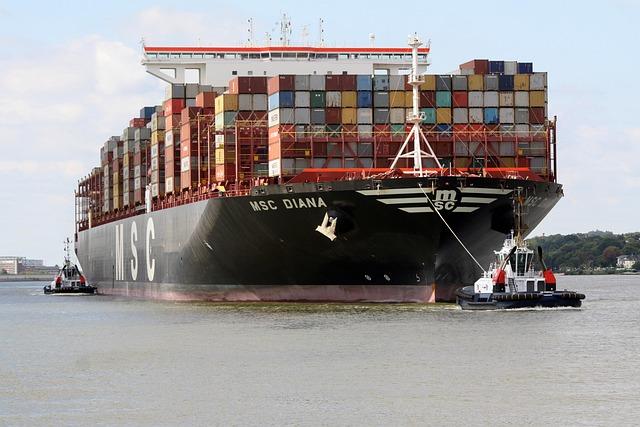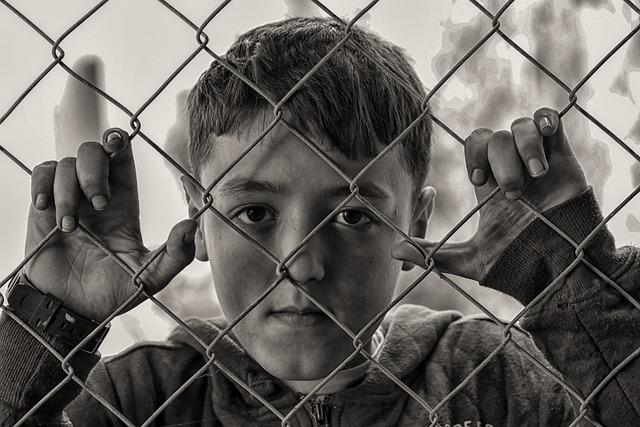In a nation grappling with the enduring effects of civil conflict and systemic challenges, the urgency for a complete understanding of poverty in Liberia has never been greater.The “Liberia Poverty Assessment: Towards A More Inclusive Liberia,” recently released by the World Bank Group, sheds light on the multifaceted dimensions of poverty affecting millions and offers a pathway toward inclusive growth. This assessment not only quantifies the current state of poverty but also delves into its underlying causes, providing crucial insights for policymakers, stakeholders, and citizens alike. With half of the population living below the poverty line, the report emphasizes the need for targeted interventions that address the unique circumstances faced by marginalized groups. As Liberia seeks to rebuild and foster resilience, this assessment serves as a pivotal tool in shaping a future where economic opportunities are accessible to all, paving the way for a more equitable society.
Liberia’s Economic Landscape: Analyzing the Current Poverty Trends
While Liberia has made significant strides in its recovery since the civil conflict, the country’s economic landscape remains challenging. Recent assessments indicate that poverty levels have not substantially decreased,with a considerable segment of the population living below the national poverty line. Key factors contributing to this ongoing issue include high unemployment rates, inadequate infrastructure, and a reliance on subsistence agriculture. Additionally, economic shocks—such as fluctuations in global commodity prices—have further exacerbated vulnerabilities among the poorest communities. While efforts are underway to stimulate growth,it is evident that a more comprehensive approach is required to tackle the multidimensional aspects of poverty.
The current trends show that poverty affects women and children disproportionately,highlighting the need for targeted interventions.Communities are facing barriers such as limited access to education, healthcare, and financial services, which perpetuates the cycle of poverty. According to recent data, over 60% of those living in extreme poverty are engaged in informal employment, which offers little security or social protection. To address thes issues effectively, the government and international partners must prioritize inclusive economic policies and robust social safety nets. The following strategies may prove essential for fostering a more resilient economy:
- Enhancing vocational training and skills development programs.
- Investing in rural infrastructure to connect farmers to markets.
- Implementing financial inclusion initiatives for underserved populations.
- Strengthening social protection systems to cushion the impact of economic shocks.
Root Causes of Poverty in Liberia: Identifying Vulnerable Populations
Poverty in Liberia is a multifaceted issue, deeply rooted in past, social, and economic factors that disproportionately affect certain populations. Vulnerable groups, such as women, children, and internally displaced persons, face unique challenges that exacerbate their poverty levels. Economic instability, lack of access to education, and inadequate healthcare services are critical barriers preventing these groups from escaping the cycle of poverty. For instance, women often lack ownership of land and resources, restricting their economic productivity. Similarly, children in impoverished households frequently miss out on education, limiting their future employment opportunities and perpetuating the poverty cycle.
To effectively tackle poverty, it is crucial to identify and prioritize these vulnerable populations. A clear understanding of their specific needs can guide targeted intervention strategies, allowing for a more tailored approach to poverty alleviation. Some key vulnerable populations are:
- Women and Female Headed Households: Struggle for equal access to resources and decision-making.
- Children: Often denied education due to economic constraints.
- Internally Displaced Persons: Face limited opportunities and social integration challenges.
- people with Disabilities: Encounter significant barriers to employment and access to services.
Recognizing these challenges can lead to initiatives that promote equity and empower the most affected groups, ultimately contributing to a more inclusive society. With focused efforts on education, healthcare, and economic opportunities, it is possible to uplift these populations and break the persistent cycle of poverty.
The Role of Education and Employment in Poverty Reduction Strategies
The intertwined relationship between education and employment is crucial for fostering economic stability and reducing poverty levels in Liberia. Access to quality education equips individuals with the essential skills and knowlege necessary for effective participation in the labor market. This not only enhances employability but also propels economic growth through increased productivity. In rural communities, promoting vocational training and entrepreneurship can empower youth and women, who often face barriers to formal employment.Key strategies include:
- Investment in Early childhood Education: Ensuring foundational learning can break the cycle of poverty.
- Technical and Vocational training: Expanding programs that meet labor market demands, especially in agriculture and skilled trades.
- Partnerships with Private Sector: Collaborating to create job placements and internships that bridge education and employment.
Enhancing the link between education and employment also addresses systemic issues related to economic inequality. Focused efforts should include regional training centers that cater to local market needs, thereby minimizing unemployment rates. Additionally, the role of gender equality in access to educational resources cannot be overstated; empowering women with education directly correlates to improved family incomes and community welfare. A comprehensive approach may involve:
- Scholarship Programs: Targeted support for marginalized groups.
- Adult Education Initiatives: Providing opportunities for lifelong learning and re-skilling.
- Incentives for Employers: Encouraging businesses to hire previously disadvantaged individuals through tax breaks and grants.
| Education & Employment Strategies | Expected Outcomes |
|---|---|
| Vocational Training Programs | Increased job placements and skill acquisition |
| Gender-Sensitive Education Policies | Better access for women and girls,and enhanced community development |
| Public-Private Partnerships in Education | Creation of job opportunities and relevant skill development |
strengthening Social Safety Nets: Recommendations for Inclusive Growth
To create a robust social safety net in Liberia, it is essential to prioritize a multi-dimensional approach that targets the needs of the most vulnerable populations. Investments in comprehensive data collection and analysis will enable policymakers to better understand the demographics and specific challenges facing these groups. In addition, the expansion of cash transfer programs can provide immediate relief to households facing economic hardships. Key strategies include:
- Universal Coverage: Ensure that all vulnerable populations, including women, children, and the elderly, have access to social safety programs.
- Enhancing Accessibility: Simplifying submission processes to increase enrollment and reduce barriers for marginalized communities.
- Integration with Social Services: Pairing financial support with access to healthcare, education, and job training to promote long-term economic stability.
Moreover,establishing partnerships with non-governmental organizations and community groups can facilitate the implementation of these safety nets,ensuring that resources are efficiently allocated and culturally sensitive.To assess the effectiveness of these programs, periodic evaluations should measure their impact on poverty reduction and inclusivity. Consider the following indicators to track progress:
| Indicator | Description |
|---|---|
| Enrollment Rates | Percentage of eligible households receiving benefits. |
| Impact on Poverty Level | Reduction in the poverty headcount ratio post-intervention. |
| Access to Services | Increased utilization of education and healthcare services by recipients. |
Promoting sustainable Development: Environmental Considerations and Economic Opportunity
In pursuing a path towards sustainable development, Liberia has the potential to harmonize economic growth with environmental stewardship. The rich natural resources, including vibrant forests and biodiversity, offer significant opportunities for sustainable livelihoods. By integrating environmentally kind practices into key sectors such as agriculture, forestry, and tourism, Liberia can not only improve the well-being of its citizens but also protect its ecological heritage. Prominent initiatives could include reforestation projects, organic farming practices, and eco-tourism expansion, which align economic opportunities with environmental conservation.
To realize these prospects, collaboration among government, private sectors, and local communities is vital. Major stakeholders can develop incentive programs aimed at sustainable practices, ensuring they are in line with Liberia’s economic goals. Below are some key actions that can be embraced to promote sustainability while fostering economic opportunity:
- Implementing policies that incentivize green technology
- Encouraging sustainable product certifications to enhance market access
- Fostering community-based resource management models
- Building capacity for local businesses in sustainable practices
| Sector | Potential Economic Opportunities | Environmental Benefits |
|---|---|---|
| Agriculture | Organic farming, fair trade | Soil preservation, reduced pesticide use |
| Forestry | timber and non-timber products | biodiversity conservation, carbon sequestration |
| Tourism | Eco-tourism ventures | Wildlife protection, habitat restoration |
Engaging Stakeholders: Building Partnerships for a Collaborative Approach to Poverty alleviation
In Liberia, the road to alleviating poverty is paved with collaboration. By fostering strong partnerships among government bodies, non-profits, private sectors, and local communities, stakeholders can leverage diverse perspectives and resources to create impactful solutions. Engaging these groups ensures that strategies are not only well-informed but also tailored to the unique needs of the population. this includes involving historically marginalized voices in the decision-making process, which is essential for crafting policies that resonate with the realities faced by those living in poverty.
A comprehensive stakeholder engagement framework can establish a network of collaboration through which vital resources and knowledge flow freely. Initiatives may include:
- local Community Workshops: Facilitating discussions that highlight local challenges and crowdsource innovative solutions.
- Public-Private Partnerships: Leveraging funding and expertise from the private sector to support grassroots initiatives.
- Capacity Building Programs: Equipping local organizations with necessary tools and training to enhance their effectiveness.
| Stakeholder Type | Role in Poverty Alleviation |
|---|---|
| Government | Policy formulation and implementation |
| Non-Profits | Service delivery and advocacy |
| Private Sector | Investment and job creation |
| Local Communities | Identifying needs and solutions |
Through these methods, Liberia can create an ecosystem where all voices are heard, and innovative solutions emerge.A collaborative approach facilitates not only the sharing of ideas but also the pooling of resources, ensuring that efforts are efficient and far-reaching. As stakeholders come together, they can develop a united strategy that accelerates progress towards a more inclusive society, paving the way for sustainable growth and poverty reduction.
Wrapping Up
the Liberia Poverty Assessment by the World Bank Group reveals a critical juncture for the nation as it seeks to foster economic growth while ensuring inclusivity for all its citizens. The intricate interplay between poverty reduction and inclusive development underscores the urgent need for targeted policies that address the root causes of inequality and empower marginalized communities. By investing in education, healthcare, and sustainable livelihoods, Liberia can pave the way towards not only lifting its population out of poverty but also building a resilient future. As the nation stands on the brink of transformation, collaboration among government, civil society, and international partners will be pivotal to realizing a more equitable society. The findings from this assessment serve as both a wake-up call and a roadmap—a compelling narrative that underscores the necessity of prioritizing inclusive growth in Liberia’s ongoing journey towards prosperity.

